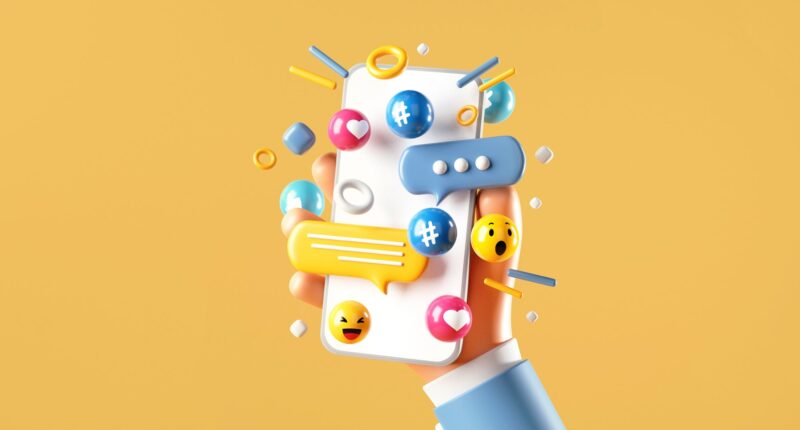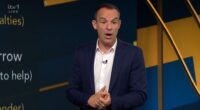
Opinions expressed by Entrepreneur contributors are their own.
Digital marketing in 2023 is like navigating through uncharted waters. With global digital ad spending projected to reach $626 billion by year’s end, cutting through the noise and making an impact is more crucial than ever.
The catch? It’s not about what you spend but how well you blend the art and science in your marketing strategy. So, if you’re all set to master the art of creativity and the science of data in digital marketing, let’s delve into this exhilarating journey of marketing success.
The creative heart of digital marketing
Creativity is the cornerstone of any exceptional digital marketing campaign. Remember the viral success of Spotify’s “Wrapped” campaign? Users eagerly awaited their personalized, end-of-year music stats, transforming Spotify from just another streaming service into a music curator that understood their unique taste.
The takeaway here? The campaign was successful because it touched the heart. It connected with users emotionally, striking a chord with their identity. This brings us to the art of audience understanding, the soul of any successful digital marketing strategy.
Related: Avoid These 5 Pitfalls In Your Digital Marketing
Understanding the audience
A profound understanding of your audience is at the heart of successful digital marketing. Building customer personas isn’t a ‘nice-to-have’ — it’s an absolute ‘must-have.’ A customer persona is a semi-fictional representation of your ideal customer based on market research and real data about your existing customers.
They help you understand your customers better, making it easier for you to tailor your content, messaging, product development and services to meet their specific needs. Developing a deep understanding of your customer personas, interests, behaviors and pain points helps refine your content to resonate better. It’s about offering value that speaks directly to them, in a language they understand, through a medium they prefer.
This personalization is the key to unlocking engagement and conversion. A study by Accenture revealed that a staggering 91% of consumers prefer brands that offer personalized recommendations and offers.
That makes sense, right?
People crave recognition, understanding and brands that tailor their experience to their unique needs and wants. So, remember, digital marketing isn’t just about flashy ads and catchy slogans. It’s about understanding your audience, engaging them personally, and, ultimately, converting that engagement into action. Personalization isn’t just a trend—it’s the backbone of effective digital marketing in 2023.
Related: How ChatGPT Is Changing Digital Marketing (for Better or Worse)
The analytical brain of digital marketing
For all the creative flair we can muster, the undeniable reality is that digital marketing has a formidable analytical core. It thrives on data — numbers and metrics that drive crucial decisions. But why is data so critical?
In 2023, data-driven marketing has taken the spotlight, acting as a GPS for marketers to navigate the complex digital landscape. By leveraging data analytics, companies can understand consumer behavior, predict trends, and make informed decisions.
For instance, Netflix, known for its intelligent use of data, customizes its content based on users’ viewing habits, significantly increasing user engagement.
Underlying this data-driven approach is the dynamic trio of Artificial Intelligence (AI), Machine Learning (ML), and Big Data. These aren’t just buzzwords; they’re game-changers. AI and ML help analyze copious amounts of data in real-time, helping businesses personalize experiences at scale.
An excellent example is Amazon. Using AI to understand customer behavior, Amazon offers personalized product recommendations, improving customer experience and increasing sales. Big Data is the fuel that powers these intelligent machines. By analyzing vast datasets, companies can glean insights about customer preferences, habits, and behaviors, in turn guiding marketing strategies.
But all this tech talk is meaningless without the right tools.
In 2023, tools like SEO and competitive analysis, HubSpot for CRM and content management and Hootsuite for social media management are vital assets in any digital marketer’s arsenal. There’s also Google Analytics, a fan-favorite for website analytics, and MailChimp for email marketing. In summary, understanding this fusion of technology and data is key to mastering digital marketing in 2023.
Related: Why data is the world’s most valuable resource today
Mastering the 2023 digital marketing landscape
Mobile marketing — If there’s one thing digital marketers can’t afford to ignore in 2023, it’s mobile marketing. With over 5 billion people using mobile devices worldwide, a mobile-first approach isn’t just smart; it’s essential. Statista reports that 73% of all retail e-commerce is expected to be generated via mobile commerce by the end of 2021.
Successful mobile strategies are aplenty, but Starbucks stands out. Their mobile app, incorporating a loyalty program, mobile payments, and personalized offers, is a masterclass leading to a 12% rise in revenue.
Influencer and social media marketing — In a world where influencers influence 49% of consumers they follow on social media, influencers have undeniably changed the marketing game.
Today, social media platforms are the new marketplace; each platform offers unique ways to reach audiences. With its visual appeal, Instagram is perfect for lifestyle and fashion brands. LinkedIn, with its professional network, is ideal for B2B marketing.
Understanding the changing digital marketing landscape in 2023, marketers can strategically use mobile, influencers and social media platforms to reach their audience in more personal, authentic, and effective ways.
Conclusion
In the 2023 digital marketing landscape, the interplay of art and science is more significant than ever. It’s not just about crafting creative campaigns but understanding your audience deeply and making data-driven decisions catering to their needs. Starbucks’ mobile strategy and Glossier’s influencer campaign are examples of this blend at work.
So, as we navigate this exciting terrain, I’ll leave you with this: Are you leveraging the right data to fuel your creative efforts? How can you better combine the science of data with the art of understanding your audience to drive success in digital marketing?
This article is from Entrepreneur.com









